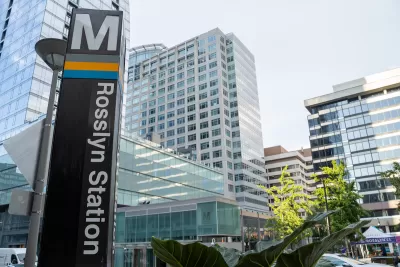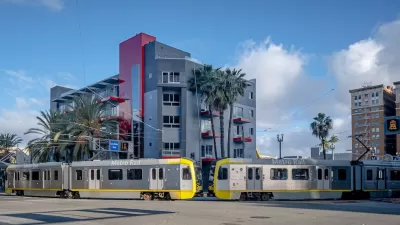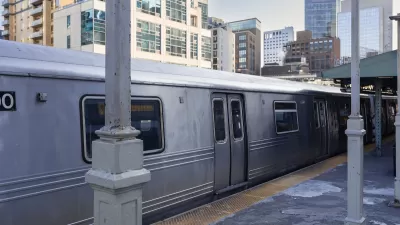Converting underutilized parking lots to housing could make transit more accessible and housing more affordable.

In an opinion piece in Greater Greater Washington, Sogand Karbalaieali calls on the Washington Metropolitan Area Transit Authority (WMATA) to meet the twin goals of boosting ridership and generating revenue to cover its massive budget shortfall by considering other options for its underutilized parking lots, which had an occupancy rate of 55 percent in 2019.
More recently, “As people opted to live and work near metro stations, the demand for parking declined. In most Maryland and Virginia stations, parking usage plummeted to as low as 20% in recent years, driven by remote work amid the pandemic.” This leaves Metro with a valuable real estate asset, Karbalaieali argues. “Why not find a better use for this wasted space?”
Joint development projects that Metro engages in already bring in $194 million in annual state and local tax revenue and $10 million in lease revenue, the article notes. “In its strategic plan, Metro anticipates that new joint developments will add 9 million metro trips annually, which would increase metro fare revenue by $40 million.” These transit-oriented developments (TOD) could
According to Karbalaieali, zoning obstacles, parking mandates, and a lack of political will are holding back such development. “To create vibrant communities around transit hubs, jurisdictions should revoke minimum parking requirements for new developments to facilitate more cost-effective construction, increase housing availability, and expedite development near metro stations.”
FULL STORY: To get the Metro we deserve, transform parking into housing

Alabama: Trump Terminates Settlements for Black Communities Harmed By Raw Sewage
Trump deemed the landmark civil rights agreement “illegal DEI and environmental justice policy.”

Study: Maui’s Plan to Convert Vacation Rentals to Long-Term Housing Could Cause Nearly $1 Billion Economic Loss
The plan would reduce visitor accommodation by 25% resulting in 1,900 jobs lost.

Why Should We Subsidize Public Transportation?
Many public transit agencies face financial stress due to rising costs, declining fare revenue, and declining subsidies. Transit advocates must provide a strong business case for increasing public transit funding.

Paris Bike Boom Leads to Steep Drop in Air Pollution
The French city’s air quality has improved dramatically in the past 20 years, coinciding with a growth in cycling.

Why Housing Costs More to Build in California Than in Texas
Hard costs like labor and materials combined with ‘soft’ costs such as permitting make building in the San Francisco Bay Area almost three times as costly as in Texas cities.

San Diego County Sees a Rise in Urban Coyotes
San Diego County experiences a rise in urban coyotes, as sightings become prevalent throughout its urban neighbourhoods and surrounding areas.
Urban Design for Planners 1: Software Tools
This six-course series explores essential urban design concepts using open source software and equips planners with the tools they need to participate fully in the urban design process.
Planning for Universal Design
Learn the tools for implementing Universal Design in planning regulations.
Smith Gee Studio
Alamo Area Metropolitan Planning Organization
City of Santa Clarita
Institute for Housing and Urban Development Studies (IHS)
City of Grandview
Harvard GSD Executive Education
Toledo-Lucas County Plan Commissions
Salt Lake City
NYU Wagner Graduate School of Public Service





























